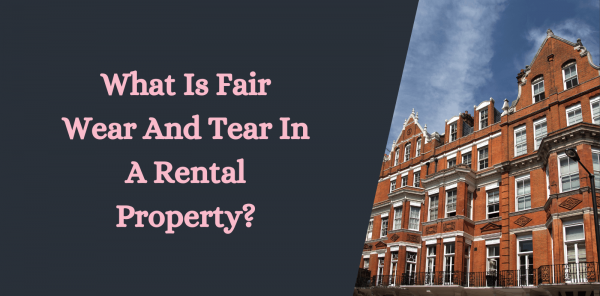Welcome to your guide to letting a property, where you’ll find a detailed breakdown of some of the key things you need to know to help you stay compliant when renting out your property in England - plus checklists to help you make sure you’ve ticked off what you need to consider.
1. Creating tenancy agreements
It is a good idea to draw up a tenancy agreement for your tenants to sign, ensuring that both parties are aware of the terms and conditions of the tenancy and that they understand their rights and responsibilities.
Tenancy agreements can be either written or oral, but a written agreement ensures proof of the terms agreed to at the start of the
tenancy.
If a written agreement, it will need to be signed by you - or your agency - and the tenant, and you should share a copy of the agreement with the tenant.
What to include in the tenancy agreement: A checklist
- The address of the property you are renting
- Any other requirements such as whether pets will be allowed at the property
- Whether you will serve a section 8 notice to terminate the tenancy early in the event of rent arrears or other breaches of the agreement
- Which bills the tenants must pay, if any
- The address of the property you are renting
- The situations in which you would deduct money from their deposits
- How your tenants should pay the rent
- Any specific responsibilities on the part of the landlord and tenant
- The process you will use if you wish to increase the rent
- The cost of the tenants’ deposits
You should be careful not to put any terms in the tenancy agreement that could be considered unfair or could breach the law. You cannot take away your tenants’ rights even
if they sign an agreement which attempts to restrict them.
2. Setting up deposit protection
There are extremely strict rules on protecting deposits, which you or your letting agent must follow, otherwise, you could face a hefty fine and potential restrictions on removing your tenants from the property. These rules apply if you are renting your home out on an assured shorthold tenancy (the most common type in England).
If you fail to protect your tenants’ deposits, the county court may force you to pay them up to three times the original deposit amount in compensation. It may also be more difficult to get the tenants to leave the property when their original tenancy ends, as you may be prevented from serving notices on the tenants until such time as their deposit is protected or repaid.
Within 30 days of receiving the deposit, it will need to be placed in a government-backed tenancy deposit protection (TDP) scheme.
The intention of a TDP is to ensure that any deductions made from tenants’ deposits are fair and reasonable. The schemes available in England and Wales are:
• Deposit Protection Scheme
• My Deposits
• Tenancy Deposit Scheme
Tenants will also need to be supplied with the following information within 30 days of receiving their deposit:
- Your name and contact details How they can get their deposit back when the tenancy ends
- The amount of the deposit they have paid
- What they can do if they cannot contact you at the end of the tenancy
- The address of the property you are renting to them
- Reasons you might deduct money from their deposit
- If a third party paid the deposit, you should include the third party’s name and contact details
- How the deposit has been protected, including the name and contact details of the TDP, as well as information about its dispute resolution service
- What they can do if they disagree with you over the return of the deposit and any deductions made
There are extremely strict rules on protecting deposits, which you or your letting agent must follow, otherwise, you could face a hefty fine and potential restrictions on removing your tenants from the property. These rules apply if you are renting your home out on an assured shorthold tenancy (the most common type in England).
If you fail to protect your tenants’ deposits, the county court may force you to pay them up to three times the original deposit amount in compensation. It may also be more difficult to get the tenants to leave the property when their original tenancy ends, as you may be prevented from serving notices on the tenants until such time as their deposit is protected or repaid.
3. Getting your property fit for human habitation:
You must ensure that your rental properties, including common areas, are fit for human habitation at the beginning of the tenancy and throughout under the Homes (Fitness for Human Habitation) Act 2018.
The criteria that determine whether a property is fit for human habitation were originally set out in the Landlord and Tenant Act 1985. Landlords must ensure that their property is free of serious hazards, which would make it unsuitable for occupation in that condition. Hazards to consider include:
- A building that’s been neglected or is in bad condition
- A serious problem with damp
- An unsafe layout
- Not enough natural light
- Problems with the supply of hot and cold water
- Problems with the drainage or the lavatories
- Difficulty to prepare and cook food or to wash up
- Not enough ventilation
- An unstable building
Landlords are considered responsible for the hazard as soon as they’re made aware of it by the tenant, or immediately if the hazard is located in a common area of the building. The landlord has a reasonable amount of time to fix the hazard, depending on the circumstances.
Landlords will still need to give their tenants at least 24 hours’ written notice of a visit to fix the hazard, and the visit should take place within reasonable hours.
4. Your rights and responsibilities for repairs
While you have tenants in your rental property, you have certain responsibilities to them, one of the most important of which is to carry out repairs, when necessary. Your tenants have the
right to live in a property that is safe and in good condition, so you need to ensure that you take action if they contact you over any issues.
Landlords-Or letting agents acting on their behalf- Are considered responsible for repairing or arranging repairs to:
- The property’s exterior or overall structure
- The pipes and drains of the property
- Heating equipment and the hot water supply
- Gas appliances
- Electrical wiring
- Damage to shared areas such as entrance halls or common staircases
- Any damage you cause to the property yourself if you are attempting to repair things
- Any other fixtures or fittings provided as part of the tenancy agreement, such as kitchen appliances
- Flues, chimneys, and ventilation
- Sanitary fittings such as sinks, baths, and toilet
If your tenants contact you requesting a repair, You should:
- Let them know when they can expect it to be completed
- Give tenants 24 hours’ notice if you wish to visit, or whatever time period is specified in the tenancy agreement if this is different, whether to carry out an inspection of the premises or to do repairs, if there are tenants living in the property
- Arrange your visit for a reasonable time
If you need to carry out emergency repairs on the property, you do not need to give your tenants notice. You may choose to allow tenants to carry out repairs in the
tenancy agreement, but you cannot make them repair anything which is meant to be your responsibility.
5. Your property's energy requirement
Your private rented property should have a minimum Energy Performance Certificate (EPC) rating of “E” in England and Wales if it’s let on an assured tenancy (including an assured shorthold tenancy), a regulated tenancy, or a domestic agricultural tenancy.
The government is also currently analysing feedback on proposals to raise energy performance standards to EPC Band C for the private rented sector by 2028. You should start to prepare now to ensure your properties can stay compliant in the future.
If your property does not meet the current minimum requirement, you’ll need to make energy efficiency improvements to raise the EPC rating.
Five steps to stay compliant with energy efficiency standards
- Your EPC report will share a list of recommendations detailing measures to improve
- You can choose which improvements you then make as long as you’re confident that they will bring your property up to a minimum E rating. Improvements could include insulating the loft, roof, or walls; upgrading the boiler; or installing low-energy lighting.
- Those improvements can be funded by third parties, self-funded, or a combination of both
- You’ll not have to spend more than £3,500 of your own funds on energy efficiency improvements to your property (although this may
change under the proposed increase to minimum energy efficiency standards) - If your property can’t be improved to EPC E for £3,500 or less, landlords should make all the improvements possible to that amount, then register an “all improvements made” exemption.
6. Your fire safety obligations
You’ll need to ensure that your property follows all fire safety regulations for private rental properties to stay compliant and avoid potential legal action in the event of a fire. You can do this
by conducting a thorough assessment of the potential fire hazards in your property.
How to do a fire risk assessment for your property:
There is no set process to follow when assessing the fire risk of a property but you should aim to cover these five steps:
- Identify fire hazards
- Identify anyone at risk in the property
- Evaluate, remove, or reduce the risks
- Record your findings, prepare an emergency plan, and provide training, where necessary
- Review and update the fire risk assessment regularly
Six things to consider when assessing fire safety
1. Smoke and Carbon Monoxide Alarm
You should have at least one smoke alarm on each floor of your property plus a carbon monoxide alarm in each room with an appliance burning solid fuel, such as a coal or wood fire. You should check that each alarm is in working order at the start of each tenancy but your tenant would then be responsible for testing them after that point.
Smoke and carbon monoxide alarms You are legally required to ensure your tenants have access to a “safe and reliable” escape route on every floor, both external and internal, to avoid tenants becoming trapped. You should make your tenants aware of these routes to help them exit the building as quickly as possible in an emergency.
2. Escape routes
You are legally required to ensure your tenants have access to a “safe and reliable” escape route on every floor, both external and internal, to avoid tenants becoming trapped. You should make your tenants aware of these routes to help them exit the building as quickly as possible in an emergency.
3. Fire doors
You need to make sure all the front doors and doors onto corridors and staircases are “self-closing” fire doors and ensure they don’t slam shut to discourage your tenants from wedging them open. You should also regularly check that the self-closing function is in working order for each door.
4. Furniture and furnishings
You need to check that your furniture and furnishings meet safety standards and that they’re made from fire-resistant materials, as per the manufacturer’s label. You’re only responsible for the furnishings you provide, not your tenants’ furniture.
5. Fire extinguishers and blankets
It’s a legal obligation to have a fire extinguisher per floor and a fire blanket per kitchen in HMOs, each checked at the start of the tenancy - and good practise to ensure this is the case in non-HMO properties.
6. Building refurbishment
You’ll need to do a risk assessment whenever you undertake these changes, to ensure your fire precautions are still in line with regulations.
7. Your gas safety obligations
You’ll need to ensure that the gas appliances and fittings in your property are safe through annual checks under the Gas Safety (Installation and Use) Regulations 1998.
Gas safety compliance checklist Landlords are required to:
- Use an engineer registered with Gas Safe to safely install and maintain all gas equipment in their properties
- Use an engineer registered with Gas Safe to do an annual gas safety check on each appliance
- Keep the Gas Safety Certificate for your records as proof of the checks for at least two years
- Share the most recent version with tenants before they move into your property, or within 28 days of a check taking place mid-tenancy
The checks should include “permanent and portable gas appliances and flues” - but your tenant is responsible for the safety of their own appliances.
If any issues are highlighted when the equipment is checked:
- You’ll need to rectify the problem at the time the check takes place or take “prompt action” to correct any defect as quickly as possible
- If an appliance is suspected to be unsafe or dangerous to tenants, it should not be used until a solution has been found
- Any follow-up action taken should be added to your record of the checks that have taken place If the issue were to affect heating, you must provide an alternative heating solution.
8. Your electrical safety obligations:
You must have the electrical installations in your properties inspected and tested by a person who is “qualified and competent”, at least every five years, and provide a copy of the electrical safety report to your tenants, and to your local authority if requested.
The Electrical Safety Standards in the Private Rented Sector(England) Regulations 2020 apply to assured shorthold tenancies, houses in multiple occupation (HMOs), and licences to occupy. Exceptions to the regulations include social housing, lodgers, those on a long lease of seven years or more, student halls of residence, hostels and refuges, care homes, hospitals and hospices, and other accommodation relating to healthcare provisions.
Electrical safety compliance checklist:
To stay compliant, you will need to:
- Ensure that national standards for electrical safety are met, as set out in the 18th edition of the “Wiring Regulations”
- Ensure that electrical installations in your rented properties are inspected and tested by a qualified and competent person at least every five years
- Obtain the Electrical Installation Condition Report (EICR) report from the inspection, which will include the results and set a date for the next inspection and test
- Supply a copy of this report to your existing tenant within 28 days of the inspection; to new tenants before they move into the premises; and to any prospective tenants within 28 days of receiving a request for the report
- Supply the local authority with a copy of this report within seven days of receiving a request for a copy
- Retain a copy of the report to give to the inspector and tester who will undertake the next inspection and test
To stay compliant, you will need to:
- Complete this work within 28 days or any shorter period if specified in the report
- Share written confirmation that the work’s been carried out from the electrician to the tenant within 28 days of completion
- Provide the same confirmation with the local authority, within 28 days of completion
Source: Goodlord






Share this with
Email
Facebook
Messenger
Twitter
Pinterest
LinkedIn
Copy this link